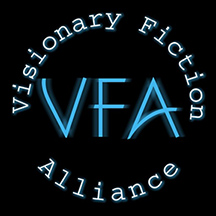Today I’m going to write about my character, Rahjni, and how I set up a scene before I even begin typing. Rahjni is one of the twelve characters in my current work-in-progress, Sunrise.
Choosing the setting and tone…
While I was working on Rahjni’s backstory, I had envisioned her as a professional ballerina. Multiple Sclerosis took away her ability to dance. I had to demonstrate the consequences of her illness by how she reacts to them, and I didn’t want to get weighed down by too much backstory. Late last week, I arrived at the scene where I had to have Rahjni deal with all the issues she’s been avoiding. The scene had to be intense and show her struggles. To keep up the pace I’ve set meant I had to arrive at the scene goal quickly and without making it seem rushed.
Before I set out to write Rahjni’s scene, I had no idea what setting I’d be using. I had an understanding of what I wanted the scene to accomplish; Rahjni needed to uncover a hidden aspect of herself that led her to the point where the story takes place. I had to figure out her own unique way of bringing her secret to the surface. My reason for going with my intuition on making Rahjni a ballerina soon made itself clear when I envisioned telling her story via the ballet. The moment that idea entered my mind, something clicked, and I knew I was on the right track.
Now that I had a setting in mind, I set out to find the ballet that would serve as both Rahjni’s final professional role as a ballerina and also run as a parallel story to what she’s endured throughout her life. I went on the internet and studied different ballets thinking it would take hours to find the right one. Ten minutes into my search I found the ballet that meshed perfectly with the scene goal: La Bayadère. Translated in English, it means Temple Dancer. From the moment I read the synopsis, I knew this ballet was the perfect fit for Rahjni’s conflict reveal scene. I found a youtube video of some of the dances, specifically the Kingdom of Shades and the death scene of Nikiya, the temple dancer. I immediately pictured how the whole scene would play out after watching both dances, and I wrote out a quick draft. After I finished writing the scene, I loved it, but man did it go to places I never expected!
Watching two dances wasn’t enough to absorb and appreciate the whole ballet. I purchased the score performed by the London Chamber Orchestra, and the next evening I watched the complete ballet performed by the London Royal Ballet with my daughters. I paid close attention to the visuals, props, colors, costumes and music, taking notes on each aspect. I’ve also been jogging to the score to internalize the music.
For further assistance, I joined a ballet forum in hopes of finding a source where I can find what piece of music corresponds to a particular dance. I found out that it varies from ballet company to ballet company, so I opted to keep the name of the pieces out, which would of only pulled the reader out of the intense visuals I wrote into the scene.
Character development builds the story.
The middle of a story has always been the most difficult for me and is typically the last thing I write. A major aha moment for me was when I first realized it’s the character that leads to the conflict. No matter how carefully and methodically I’ve plotted a story, in almost everything I’ve written, the conflict is the most difficult for me. I need to spend a lot of time with the characters to get a sense of who they are. Their struggles unlock the door to the conflict that should seamlessly flow into the climax of the story. When I started writing Sunrise, I knew the conflict I outlined wasn’t strong. I mused over which of the twelve characters would bring about the conflict that would push them all to the climax that I had already written. Yesterday, one of my other characters revealed the conflict, and I wrote out the scene.
After I completed Rahjni’s ballet scene, the conflict of this particular character revealed itself organically and had presented me with a new thread I hadn’t expected. Now I needed to choreograph that scene and find a setting. The answer came to me while I was working out at the gym. I posed a question about what truth the conflict will reveal, and a whole other strange and surreal setting came to me in full color! I took my daughters out to lunch and then we headed over to the library where I wrote out the scene.
My last few writing sessions have been quite productive. I got out of them the main story conflict, a character conflict, plus a character reveal scene. I also began structuring a new story inspired by my husband. I’m the type that prefers to have a lot of projects ready to go. It keeps me motivated.






